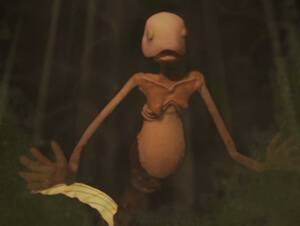Bristol Festival of Puppetry – Animation Events
Earlier this month saw the return of Puppet Place’s biennial Bristol Festival of Puppetry. The festival, headed up by Rachel McNally and Chris Pirie, spans theatre, exhibitions, live demonstrations, workshops, screenings as well as a carnival and puppet trail, its focus on puppets from both a craft and application perspective proving a hit with children and adults alike. Naturally this lends itself very well to the oftentimes vital role of puppets in animation, and Skwigly were fortunate enough to take in some of the events on offer.
One of the main draws for the animation community began with the “Talking Heads” workshop headed up by stop-motion lecturer/author Mary Murphy and Aardman head modelmaker Jim Parkyn. The workshop gave students the opportunity to involve themselves firsthand with the process of making their own puppets as well as animating custom-built models, to get a handle on the feasibility of producing their own work. At the other end of the spectrum Parkyn was on hand to demonstrate the materials, technical processes and industry solutions for larger scale productions, the like of which Aardman are best known for.

“Balance” (Wolfgang & Christoph Lauenstein, 1989)
On the evening of the 4th Aardman co-founder Peter Lord was at the Tobacco Factory theatre (accompanying a mini-exhibition of instantly-recognisable Aardman puppets and production artwork) to present a hand-picked screening of stop-motion films whose innovation and ingenuity made them vital to the progress of the medium. Amongst these were Wolfgang & Christoph Lauenstein’s Oscar-winning 1989 short Balance, a staggeringly well-observed and highly influential study of cause and effect as pertaining to…well, balance. Other highlights included a classic episode of Oliver Postgate’s The Clangers (which served as a welcome reminder that effective random humour did indeed exist in animation a good long while before Adventure Time), the opening sequence from Madame Tutli-Putli (Chris Lavis and Maciek Zczerbowski, 2007) and What Ho, She Bumps (a fabulous showcase of George Pal’s labour-intensive replacement animation technique from 1937). With introductions to each clip from Lord himself, the evening served as a fine panorama of the ‘standing on the shoulders of giants’ philosophy and just how much is owed to the groundbreaking work that has come before.

“Carousel” (Mae Voogd, 2013)
Looking to the present was a selection of significantly more recent films courtesy of Show Me The Animation, whose film nights and networking events have been a staple of the Bristol animation scene for many a year. With a focus on new filmmakers within stop-motion there was a great deal to enjoy, including a particularly strong crop of recent Bristol School of Animation graduates. Amongst them were Elizabeth Johnson and Katrina Hood’s Night Light and Mae Voogd’s Svankmajer-esque Carousel (both of which fine showcases of puppetmaking craft to a degree rarely seen in student films) and Luka Bajt’s slick mini-epic Ancient which displayed traces of both Burton and del Toro in its meticulously constructed setting. From a story perspective Betty Beep (Helena Houghton) received a strong response for its sweet insight into a woman’s dayjob-induced fantasies, evoking the likes of Michaela Pavlatova and Beryl Cook. Similarly Joseph Mann’s Sandy went down very well with its charming and strangely nostalgic (for this reviewer) dirtiness. Also on show was the strong design work of Maria Lee in Nether Regions, a dry satire detailing the bureaucracy of the underworld, and Tim Reckart’s much-celebrated NFTS insta-classic Head Over Heels (read our interview here), which is always a pleasure to watch.
Rounding off the animation events was an open-door exhibition held at Puppet Place HQ hosted by Rusty Squid, which boasted a densely packed array of puppets, puppet-making, live animation and – crucially – free cake. What made this a perfect capper to the festival was its bringing together of so many components of the events that preceded it. Puppets from some of the films that had screened during the week were on display midst hand-crafted automata, stop motion software in action, 3D printing and an interactive zoetrope. The degree to which the exhibition was packed by puppet enthusiasts served as a refreshing reassurance that the slickness of advanced CG and VFX processes has not completely overtaken the hearts and minds of the public. There’s still much enthusiasm for the art of the puppet and all manners of performance it enables.
For more information on Puppet Place you can visit them at puppetplace.org

